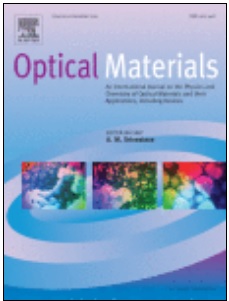Photoluminescence properties of red-emitting Pr3+-doped Bi2ZnOB2O6 microcrystalline powder and PMMA-based composite materials were reported. Bi2ZnOB2O6:Pr3+ powders were synthesized by means of the modified Pechini method. The morphology and crystallographic structure of Bi2ZnOB2O6:Pr3+ microcrystals were investigated by XRD and HRTEM. The PMMA-based composite materials were prepared by embedding of Bi2ZnOB2O6:Pr3+ powder in the PMMA matrix. The vibrational properties of the powder and composite systems were investigated by μ-Raman spectroscopy. Emission spectra of the samples were measured under blue (451.6 nm) and UV (320 nm) excitation. Both, the powder and composite samples show enhancement of red emission (1D2 → 3H4) and quenching of greenish-blue luminescence from 3P0 level of Pr3+ ions after excitation in UV and VIS caused by the 3P0 ∼ 1D2 non-radiative relaxation of Pr3+ ion by low-lying charge transfer state and non-radiative de-excitation through Pr3+–Bi3+ energy transfer. The response of the powder and composite samples to pulsed excitation at 451.6 nm was measured by monitoring emission from the 1D2 level (595 nm/3P0 → 3H6 transition). The determined lifetimes τ1 and τ2 of the red emission at 595 nm (1D2 → 3H4 transition) of the composite are significantly longer in comparison to powder samples. Moreover, because of the good nonlinear optical properties of the Bi2ZnOB2O6 crystals and effective luminescence of the Pr3+-doped Bi2ZnOB2O6 powders and composites, they can be very useful as bi-functional materials in the new generation of optoelectronic devices.

